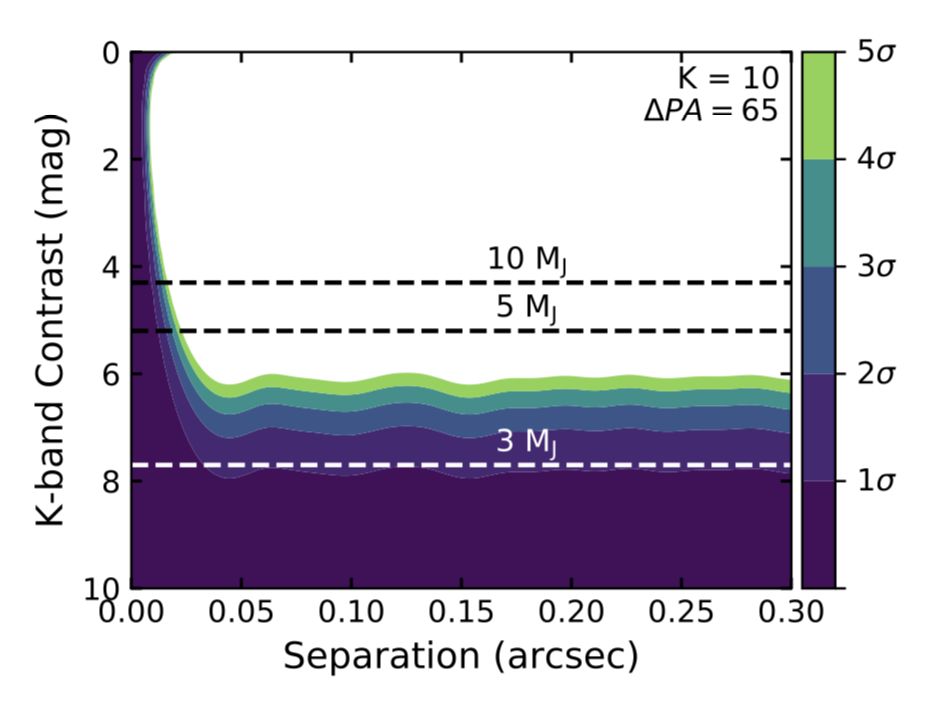Planets
Adaptive optics is one of the key technologies allowing the direct imaging of gas giant exoplanets. While the catalogue of imaged planets has been growing in the last decade, it is biased towards older planets, and less is known about the early stages of formation. AO imaging of exoplanets has required that the planets be orbiting an optically bright Natural Guide Star (NGS). This limits observations of young stars, which are brighter in the infrared, and hence limits observations of early protoplanets.
KAPA’s ability to use infrared NGS’s will allow it to observe the formation of young protoplanets, and compare the prominence of core accretion and gravitational disc instability formation models.

KAPA will observe young stars in the nearby Taurus and ρ Oph star forming regions. These regions are optically faint due to extinction, but bright in the infrared where KAPA can operate. KAPA will have a higher angular resolution than JWST, along with a much faster target acquisition time, making it ideal for larger surveys such as this.
KAPA’s improved Strehl ratio will benefit exoplanet detecton by removing light from the star’s PSF halo, as well as improving the detection of companions. Spectroscopy from KAPA, combined with atmospheric models, will be able to estimate tempratures, surface gravities, and compositions of exoplanets. Core accretion models predict a range of temperatures and luminosities, and KAPA will be able to constrain these.
